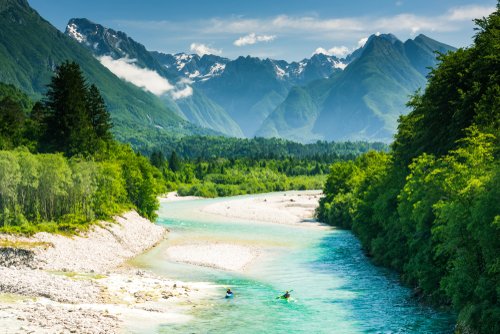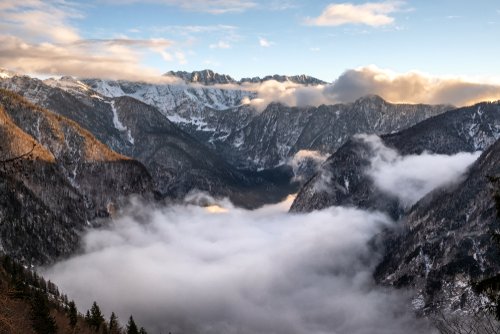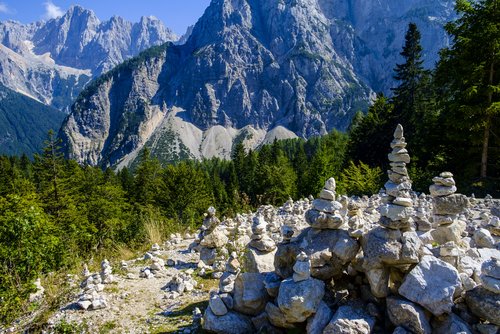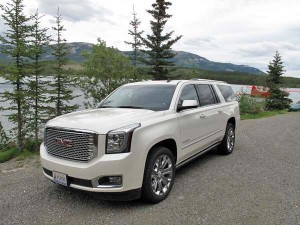Top 3 Extreme Sports Activities to Do in Slovenia
When it comes to natural wonders, the Trenta-Bovec-Žaga should definitely rank high on the list. Located at the northwestern section of Slovenia, these settlements are home to roughly 3,000 residents and boast of plummeting gorges, towering limestone mountains of the Julian Alps, and a pristine river. Throughout the centuries, the region has been inhabited by sheepherders, alpinists, and iron miners, but due to its seclusion, it has failed to attract people from settling down permanently. Today, however, many travelers are starting to appreciate its various offerings, engaging many sporty adventurers to check it out.
Petra Vasadi, the owner of a rafting company called Soca Rider, says that there is no other place in the world you can go to where you can participate in various extreme activities such as rafting, fly fishing, paragliding, mountain biking, and mountain biking in one spring weekend, all the while enjoying the beauty of nature.

While tourist visits peak during the summer season, there is no need to worry, because its mammoth Triglav National Park (it is 324-square-mile in size!) has more than enough space for all of its guests to roam comfortably. The area also has mountain huts and villages covered by fairytale-like surroundings where tourists can rest after a tiring albeit fun-filled day.
Seriously, there are countless activities you could try out when you visit this region, but to us, the following are our top 3!
Raft the Soča River
The enchanting emerald color of the Soča River resulted from the mineral deposits of its limestone bedrock. Visitors gasp at the sight of its crystalline waters and are already mesmerized even before they experience the excitement of rafting along over 15 miles of varying levels of rapids (from Class I to IV) located between the Lepena and Trnovo settlements.
The river’s lovely hue, its boulder “gardens”, and its gorges that are lined by forests are a heavenly sight to see that truly attract and fascinate both rafters and kayakers alike.
It is quite interesting to know that the river’s history is rather grim. During WWI, Austro-Hungarian troops waged wars against the Italians along the river. Today, however, the river is peaceful and serene, particularly the pools and coves located in between rapids. During the spring melt, the river runs higher than usual. During the summer and early fall, tourists can expect warmer weather that balances the brisk water’s cool temperature.
Hike mountain slopes

Trenta can be found within a valley shaped like a horseshoe and is a portal to extremely long hikes, such as the 12-mile Trenta–Kranjska Gora stage of the Alpe-Adria Trail. This trail passes through crests, forests, and a 5,285-foot Vršič Pass. A small wooden chapel built by Russian prisoners of war in 1917 offers a respite to hikers. The chapel was created to honor the prisoners’ deceased inmates.
If you want to hack the climb, ride a cable car in Bovec. After 35 minutes of a vertical ascend, you will arrive at the Kanin ski resort. The tourist sport holds one of the highest restaurants ever in Slovenia and has various hikes ranging from easy strolls to the more challenging 8,487-foot hike to the summit of Big Mount Kanin. If you don’t want to miss the amazing views that stretch to the Adriatic Sea (35 miles away from the place), then this hike is a must for you.
Cycle Vršič Pass.
If you are a hardcore cycler, then you must add the Vršič Pass to your bucket list. The 39-mile adventure from Kranjska Gora to Trnovo includes goosebump-inducing vistas, a 4,035-feet elevation gain, and 50 switchbacks. The path primarily consists of cobblestone and asphalt. Enroute to Trnovo, cyclers will pass a monument built in honor of Julius Kugy, an Italian climber and botanist who famously explored the mountain; and a WWI cemetery; and the colorful and vibrant Juliana Alpine Botanical Garden that is best visited during May and June.
The trail begins with a relatively easy 25-mile spin at the town of Tolmin. Cyclers will then trace the aquamarine Most na Soči lake, and will pass through a group of villages. The villages are located past the Babja Jama cave, where women and children were said to hide during the 15th-century Osmani plunder. The trail continues on to the medieval town of Kanal.






























